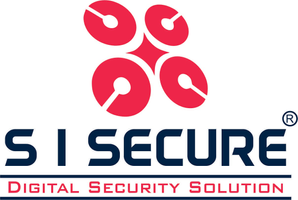Title Page
-
Project Name
-
Project Number
-
Location
-
Conducted on
-
Technician
-
Client Contact
-
Client Email
-
Client Phone
-
System firmware version
System Components
-
Overview
1. All answers to the below questions are to provide the client with a detailed overview of the client's system.
2. Photos in "Images" and Comments in "Notes" on each question will provide the client with further detail about the system.
3. Add a Corrective Measure in "Action." Provide a description, assign to a member, set priority, and due date
4. Share your report by exporting it as PDF or Web Linkz -
Photos of final Installation
-
If photos can be taken, provide photo of the site
Equipment
-
Equipment has been turned over to client.
-
List all equipment NOT present, and why?
-
Work with project manager to make sure that all equipment is verified
-
Types of Displays onsite
- LCD Video Wall
- LED Video Wall
- Auxiliary Monitors
-
Verify the measurements. If there are any adjust made doing installation verify that these changes has been added to the "redlines" to be added the the as-builts
-
Confirm the video wall mounted mounted in accordance to engineering drawings
-
Verify that all displayed images do not have pixel failures (bright or dead pixels) that exceed the requirements. (Only required if LED Video wall installation was completed)
-
Confirm the video wall mounted mounted in accordance to engineering drawings
-
Verify the measurements. If there are any adjust made doing installation verify that these changes has been added to the "redlines" to be added the the as-builts
-
Confirm that all Aux displays are have been color balance to match Video Wall
-
Verify that the Aux monitors display resolutions required by project
-
Confirm any "Aux Monitors" are install in accordance to engineering drawings
-
Confirm all i.e HDMI, DP, etc. are displaying properly on video wall and Aux displays. (Make sure to use customer's laptops or other assets when testing.)
-
Confirm all peripheral equipment hooked up as per flow diagram: microphones, loudspeakers, video monitors, projectors, PC’s, USB switchers, etc.
-
Confirm that all cable run in the ceiling are not laying on tiles.
-
Any cables running the ceiling should never lay on tiles. All cables should always be run in either cable trays, j-hooks, or bound to ceiling grid support. Ceiling cable also should never run parallel to power, unless there is a 90 degree bend in the cable before reaching the equipment
-
Speakers provided
- Ceiling Speakers
- Loud Speakers
- In Wall Speakers
- N/A
- GFE / OFE
-
Visually there should be no damage to ceiling tiles nor extra holes in walls.
-
Confirm that Speakers and mounted correctly.
-
Verify that ceiling speakers are switched at the correct settings
-
This dial is called a speaker "tap." You can set the tap to determine how loud the speaker can go. The higher the tap, the louder it can get; the lower the tap, the softer the volume will be. Tap settings are critical when determining how much amplifier power you need for your speakers.
-
Confirm that loudspeakers are placed and aimed to give full coverage to the whole room
-
Verify that speakers are mounted at the height stated on engineering drawings
-
Verify that speakers have been tested with new equipment
-
What are the issues sending audio to the speakers
-
Microphones Provided
- Ceiling
- Tabletop
- GFE / OFE
- N / A
-
Verify that Any Ceiling Microphones and Installed Properly. Make sure there is no damage to ceiling tile.
-
How are microphones wired
-
Look at any soldering connections to verify joints are soldered correctly. Also check Phoenix connectors to verify that exposed wires are "seated" in connector correctly. (Take Photos)
-
Confirm any table top microphones are wired in correctly
-
How are microphones wired
-
Look at any soldering connections to verify joints are soldered correctly. Also check Phoenix connectors to verify that exposed wires are "seated" in connector correctly. (Take Photos)
-
Has each microphone been tested
-
Have microphones been adjusted for room
-
Wallplates Provided
- Yes
- No
- GFE / OFE
- N/A
-
Verify that any wallplates installed have the correct "mud rings" to secure the wallplate to the wall. Also if wallplates are used to bring bulk cables into the room i.e. behind a video wall, verify that the wallplate has ample space and not full.
-
Confirm that any wallplates are installed correctly and at the correct height in accordance to engineering drawings
-
Make sure that wallplates have proper mud rings in the drywall and the proper wall plate is in place. make sure the correct screws and used
-
Ensure that room has been vacuumed, screens and wiped down, all all trash is removed
-
Any Additional comments about the "Physical Installation"
Electrical
-
As we are not licensed electricians, HaivisionMCS team members can only spot check electrical coming from client infrastructure. If any issues that could possibly result in system failure will be brought up during either the installation or Commissioning process.
-
Confirm that all AV equipment is powered from the designated power circuit and outlets.
-
Make sure that all power is on either a power conditioner or UPS. If any equipment is connected to a basic surge protector notify the Project Manager as this not our standard
-
Confirm that the AV system is correctly grounded in accordance with the requirements of the regulatory authority.
-
The rack should be grounded either by a grounding rod provided by the client or to some ground. Take photo showing that the rack is properly grounded
-
Does system contain an uninterruptible power supply (UPS)
-
Is UPS performing to the specifications as defined in the project documentation?
-
Confirm the UPS is setup. Power down the main power and verify the UPS provides back up the system
Rack Mounted Equipment
-
If any changes have been made during installation, verify that these adjustments have been noted on the "redlines" to be modified for clients "as-builts." Verify front, back, and sides of the rack
-
Is all rack-able equipment installed?
-
What equipment is not installed?
-
Confirm that all rack equipment is installed in accordance to engineering rack elevations
-
Are all blanks and vents installed in unused rack spaces.
-
Confirm airflow through the rack according to project documentation. Verify that the temperature in the AV rack has been measured and is within heat tolerance for AV Equipment
-
Each rack should have proper ventilation in the rack to prevent equipment in the rack from overheating. If rack blanks need to be pulled from the rack document this. Provide reasoning way airflow is obstructed
-
Confirm that all components installed in AV equipment racks are free from dirt, dust, water, or any other element that would compromise the performance and/or longevity of the AV system.
-
Provide instructions to client on how keep the system working a optimum performance
-
Any additional comments for "Rack Mounted Equipment"
Rack Mounted KVM
-
Rack Mounted KVM provided
-
Confirm the KVM switches properly between devices
-
Achieve this by pressing the scroll-lock button 3 times on the KVM keyboard. This will bring up and devices. Verify that each device is named correctly
-
Confirm proper keyboard and mouse control of all devices
Site Manager / Resource Manager
-
Confirm Site Manager is Functioning Properly
-
Confirm correct IP addresses are set.
-
Confirm all hostnames are set.
-
Confirm time servers are pointed to either client's server or to the Site Manager if applicable.
-
Z Drive Expanding: Is Z: drive on Alpha expanded for backups (Expand at Least 200 gb)
-
To adjust the Z: drive (D: drive if working Command 360) in the search type "create and format hard drive partitions." in the drive fields right click to expand the volume. From there you can adjust the back up volume
-
Confirm proper connectivity from the KVM to the Site Manager
-
Confirm that "CineNet" comes back to a functional state after system reboot or shutdown
Alpha Processor
-
Confirm Alpha canvas loads correctly
-
Confirm correct IP addresses are set
-
Confirm "low latency" setting is set to false
-
Z Drive Expanding: Is Z: drive on Alpha expanded for backups (Expand at Least 200 gb)
-
To adjust the Z: drive (D: drive if working Command 360) in the search type "create and format hard drive partitions." in the drive fields right click to expand the volume. From there you can adjust the back up volume
-
Confirm proper connectivity from the KVM to the Alpha
-
Confirm that "CineNet" comes back to a functional state after system reboot or shutdown
Cable Management, Termination, and Labeling
-
Confirm that tie wraps are not too tight as to deform the cable. Insure cables are laced and bound with Velcro ties.
-
Confirm that terminations are free from stress due to gravity acting on the cabling or cable dressing technique.
-
Confirm terminations have a sufficient service loop, allowing a re-termination or two without having to open a cable bundle or pathway to lay in a new cable.
-
Make sure that the installation has at least 6 feet of extra wire for all wire coming into the rack. interconnected items in the rack should have spare wire on the sides of the rack. Spare wire should be coiled either in the rack at the bottom of under the floor under the rack and neatly dressed.
-
Confirm the installation of cable supports depending on size and stiffness of cable.
-
Confirm installed cables have appropriate separation according to signal type and level.
-
Cable wiring should be separated. Power and audio/video cables should never be bundled together. Power and control should be run the left of the rack and audio and video run to the right side.
-
Confirm cables are appropriately dressed and bundled according to cable type.
-
Confirm that cables are not bent beyond their minimum bend radius to maintain signal integrity.
-
Confirm all cables have clearly legible, unambiguous identifying labels, and labels are oriented and positioned consistently. Labels are visible without system disassembly and are not hidden in cable bundles.
-
Confirm that all AV connectors are correctly keyed, seated, and latched to respective connection points.
-
make sure that all terminations are terminated without clips (cate5), soldered with no bleed over. if installers used flush cuts in the rack for zip ties or for cate5 end make sure there is no access wires exposed
-
If plate labeling is required; Confirm all connectors on input and output plates are labeled.
-
Additional Comment in regards to "Cable Management, Termination, and Labeling"
Control, Software and Networking
-
Verify the control system is implemented in a manner consistent with the requirements.
-
Verify that all IP-controlled equipment properly configured with IP addresses, host names, time servers, Gatekeeper addresses, network configurations, and subnets as applicable. All system connections are operational and devices communication correctly.
-
Verify that PoE (Power over Ethernet) devices are supplied with correct power required for normal device operation. Verify under practical conditions that the switch providing PoE has the capacity to power all of the devices that are connected to it.
-
Verify that all control system programming installed and properly communicating with the equipment intended.
-
Verify that remote management tools such as virtual touchpanels, internal web applications, or manufacturer’s applications are configured and functional
-
Verify that all Global cache functions are working based on SOW.
-
Control System Power Cycling and Recovery The control system will restart and resume full operation following an unanticipated cycling of AC power to the control system.
-
Confirm that the control system test has been completed and defined in the project documentation.
Touch panels
-
Does this system have external touch panels
-
How many external touchpanels are in the system
-
(Touch Panels) Verify that system user interface conforms to user or specified requirements and all pages and buttons operate as intended.
-
Confirm all functions are working on touchpanel.
-
Are All required Certificates loaded to each touchpanel.
-
Verify that "Haivision/Cinemassive" approved wallpaper is shown on touch panel
-
Verify that after a restart. Once booted back up CineNet welcome screen comes up
-
If Client has a streaming engine, confirm that "live mode" can be shown
-
Confirm that SSL cert has been added the touchpanels
-
Is Cinenet UI accessible on Client Network?
3rd Party Client Interfaces
-
CineNet is a web-based software and Google Chorme is the preferred internet browser for use. Though other browser can reach CineNet there is no garrenttee
-
Has SSL certificate been handed over to the client if CineNet is to be added to multiple units
-
Can CineNet be reached on all Client systems.
-
If Client system has "live mode" functions can this be seen on clients PC's.
-
Can all pages and and control be used in from Web based CineNet for room operations
Video Performance
-
All video performance tests are made from all electronic system inputs (first physical output of source media, all I/O plates) to all electronic system outputs (all outputs connected to display inputs, all connections to external facilities (to other rooms, buildings or external services such as broadcast connections).
-
Verify correct white balance and calibration of all video displays to ensure they display colors are uniform
-
Verify that all video routes are tested from endpoint to endpoint via the appropriate midpoint(s) for operation and routing required.
-
Verify that when several displays are visible we can demonstrate consistencies in displays signal to all.
-
Move images between screens, make sure that you are seeing consistent images without lag
-
Verify no signal dropouts if installation requires video extenders
Audio Performance
-
All audio performance tests are made from all electronic system inputs (first physical output of source media, all I/O plates, mic inputs) to all electronic system outputs (all outputs connected to amplifier inputs, all connections to external facilities (to other rooms, buildings or external services such as broadcast connections).
-
Audio Provided
-
Measure background noise level during normal room operation. Measure audio system level during normal room operation.
-
Audio level should exceed background noise level to provide for clear, intelligible amplified sound.
-
Verify that the operation of any wireless audio systems (RF and IR) identified by the project documentation.
-
Make sure that both the microphone and the receiver are on the same frequency . Make sure that you can walk around the room with no audio drop-outs. You my need to adjust the gain on the microphone or receiver.
-
Confirm that all zones are sending out audio.
-
If audio zones are set up for multiple rooms. Verify by sending different audio to the varies rooms. If the room is set up for a "mix - minus" make sure that both audio levels are adjusted so that whatever the area you are in the audio for that area is quieter than the other areas.
-
Verify that all presets in the Bi-amp set and labeled correctly.
-
Launch the bi-amp file. On the presets section you should rename the preset to mirror the room
-
Measure audio system headroom. Audio system should be capable of performing above nominal operating levels without distortion.
-
Verify that no audible noise caused by improper installation of any equipment provided in completed system(s) is present
-
Verify that all DSP based products have been programmed as defined in the project documentation.
-
Verify that any required muting or operational change of the installed sound system(s) has been made in accordance with local requirements and/or design specifications in the event of emergency.
-
Verify that coverage of the audio systems in listener areas meets the performance requirements.
-
Calibrate audio system inputs so there is zero or minimal difference between any input signal level.
-
Measure latency of the audio system. Latency should not exceed design requirements of the system.
-
Check audio from PC's and from cable tuners, while playing look to see if the audio playback is in sync with the video being played. If not you may need to add a delay to the bi-amp. First look at any HD-D in the system and adjust from there before added a program to the Bi-amp
-
Save final configuration
-
Save final adjustments of a the biamp file and upload to Project in Basecamp
-
Room Audio
- Basic Audio playback
- Sound Reinforcement (Microphones)
-
The speech reinforcement system shall be stable and operate without feedback.
-
While using microphones in the room speak in the microphones and adjust in the gain values in the biamp. Make sure the audio output stays close to a range on 0db. This will ensure that the microphones do not sd feedback
CineNet User Interface
User Management
-
User Groups should have a "Standard , Administrator, and Kisok" category as a default to each system. It is the client discretion if they will need to use. Usage should explained during training and configured before leaving site.
-
Confirm with client any additional usernames and passwords for cinenet access
-
Confirm all Users are properly configured
-
Work with client to add any additional users and passwords
-
Confirm and all users groups are setup
-
If you will be adding different activities, make sure that you build different groups and ad users to help client build restrictions for users
Display
-
Verify that all canvas are setup for video wall and all aux monitors
-
Do aux monitors require 4k-D Decoders
-
If 4k-D decoders are in place. Verify that the Deocoders are set up
Devices
-
Confirm all devices are setup
-
If audio decoder are in the system confirm and all audio streams are setup
CineLinks (Setup)
-
Does the system require CineLinks
-
Verify that all encoders and decoders are online
-
Confirm that all CineLinks are properly named in CineNet for ease of use
-
Confirm that only the CineLink on the site are in the online tree
-
Confirm that all inputs have the appropriate latency settings
-
Confirm that all inputs are set to the correct encoding mode
-
Are clients using 4k PC's
-
If clients computers are sending out 4k signals. Verify that a separate stream is setup for audio
Preventive Maintenance and Support
Rack Serviceability
-
Equipment must be able to be serviced for the life of the system; designed with the maintenance technician in mind (he or she will "own it" longer than the person who fabricated the system initially).
-
Input/output on the processor are easily accessible.
-
If there are obstructions prohibiting the disconnection of terminations on the back of AV equipment, there must be sufficient cabling to permit the equipment to be pulled from the front, and disconnected there.
-
Confirm that equipment is not tie-wrapped to the cabinet, and that there are no obstructions to the item being pulled from the front of the rack.
-
Can equipment be pulled for repair or replacement without hindrance.
-
If equipment must be RMA'd in the future, can cables be easy disconnected and reconnected when equipment is re-installed
-
Rooms
-
Verify all Rooms are properly configured
-
Confirm the the room is labeled to client preference
-
Verify that all audio presets are set up in the room
Activities
-
Confirm all Activities are properly configured
-
Making adjustments to any activity will clean the user interface by make using the system easier
-
Confirm Start and end Behaviors and set if client has requested
Behavior / Behavior Groups / Behavior Triggers
-
Confirm with the client that behaviors have built to provide ease of use
-
Verify that basic behaviors are in that place, i.e. "clear wall, system on/off
-
Equipment Failover
-
If client has requested a failover option. Verify that the system is working in a failover. During training this should be covered
-
Verify the system changes to emergency failover when commanded. Verify emergency operates in accordance to project documentation.
CineNet Lanuch
-
All Assets are available and properly labeled in CineNet
-
CineLink streams are properly decoded for audio and video
-
All devices are properly responding to control commands
-
All layouts recall properly
-
All behaviors are executing properly
-
Layouts save correctly
-
Layouts can be "overwritten"
-
Are Clocks displaying the correct time
-
CineNet additional add-ons
- Live Mode
- IP Streams
- N/A
- Add Image
-
Does the canvas toggle between edit and live mode
-
Confirm all IP streaming sources display properly on video wall and Aux displays
-
Confirm all IP streaming sources properly display on the video wall
-
If allowed can a jpeg file be uploaded and shown as an asset
-
Any looping behaviors that recall layouts have an appropriate delay between commands.
-
CineAgents Provided
-
All client websites are properly displayed on the video wall
-
Verify that CineAgents can be brought to the wall and can be control through "Control Aplication"
-
Confirm that are required port are open
-
All client websites are properly controlled via CineNet
-
Clear and reload website streams and confirm proper operation
-
All CineAgents connect properly after a system reboot
-
Time clocks match the Site Manager (or Alpha)
-
CineLink KVM Provided
-
All PC's can be switched on CineLink KVM
-
All keyboard, mouse, and video are functioning correctly
-
All PC's connected to the CineLink KVM are showing on the video wall
-
All PC's are labeled correctly in the CineNet foe ease of use for the end user
-
All PC's connected to the CineLink KVM are showing on the aux monitors
Video Teleconferencing
-
While onsite Commissioner will need to conduct either a VTC, Team, or Zoom call to verify all functions
-
Video teleconferencing
- Cisco
- Polycom
- Zoom
- Teams
- Other
- N/A
-
Confirm VTC calls, Established Pick-Up/Hang-Up call
-
Confirm that PC interface is working through VTC feeds during call in PC Presentation
-
Does camera Pan, Tilt, Zoom, and Auto Focus
-
Verify proper alignment and placement of microphones in the system.
-
Verify cameras are free from obstruction that would limit sight angles in the room
- Pass
- Fail
-
Confirm that audio clear on the far and near end during call.
-
For conference systems, adjust microphone input gain to demonstrate that "standard talker," positioned at each talker position in the room, produces a 0 dBu level at the output of the output bus of the audio conference DSP device. Verify signal levels for both transmit and receive using normal speech.
*For Systems Using Viddio Equipment
-
Verify that USB cable is connected to main PC that will be used to Teams, Zoom, or Skype calls
-
Verify the the PC does recognize Viddio for both camera and microphone function
-
Verify that these setting are in either web based application
-
Confirm VTC calls, Established Pick-Up/Hang-Up call
-
Does camera Pan, Tilt, Zoom, and Auto Focus
-
Confirm that PC interface is working through VTC feeds during call in PC Presentation
-
Verify proper alignment and placement of microphones in the system.
-
Verify cameras are free from obstruction that would limit sight angles in the room
-
Confirm that audio clear on the far and near end during call.
-
For conference systems, adjust microphone input gain to demonstrate that "standard talker," positioned at each talker position in the room, produces a 0 dBu level at the output of the output bus of the audio conference DSP device. Verify signal levels for both transmit and receive using normal speech.
-
Confirm that PC interface is working through VTC feeds during call in PC Presentation
-
Does camera Pan, Tilt, Zoom, and Auto Focus
-
Confirm VTC calls, Established Pick-Up/Hang-Up call
-
Verify proper alignment and placement of microphones in the system.
-
Verify cameras are free from obstruction that would limit sight angles in the room
-
Confirm that audio clear on the far and near end during call.
-
For conference systems, adjust microphone input gain to demonstrate that "standard talker," positioned at each talker position in the room, produces a 0 dBu level at the output of the output bus of the audio conference DSP device. Verify signal levels for both transmit and receive using normal speech.
-
Confirm that PC interface is working through VTC feeds during call in PC Presentation
-
Does camera Pan, Tilt, Zoom, and Auto Focus
-
Confirm VTC calls, Established Pick-Up/Hang-Up call
-
Verify proper alignment and placement of microphones in the system.
-
Verify cameras are free from obstruction that would limit sight angles in the room
-
Confirm that audio clear on the far and near end during call.
-
For conference systems, adjust microphone input gain to demonstrate that "standard talker," positioned at each talker position in the room, produces a 0 dBu level at the output of the output bus of the audio conference DSP device. Verify signal levels for both transmit and receive using normal speech.
-
Type of video conferencing
-
Confirm that PC interface is working through VTC feeds during call in PC Presentation
-
Does camera Pan, Tilt, Zoom, and Auto Focus
-
Confirm VTC calls, Established Pick-Up/Hang-Up call
-
Verify proper alignment and placement of microphones in the system.
-
Verify cameras are free from obstruction that would limit sight angles in the room
-
Confirm that audio clear on the far and near end during call.
-
For conference systems, adjust microphone input gain to demonstrate that "standard talker," positioned at each talker position in the room, produces a 0 dBu level at the output of the output bus of the audio conference DSP device. Verify signal levels for both transmit and receive using normal speech.
VoIP / Audio Conferencing
-
VoiP / Audio Conferencing provided
-
Confirm with client if far end calls are usually by cell phone, computer, or conference call. All these will need to be tested and Bi-amp will need to be adjusted. Know that you will not get all of these to sound the same but adjust to get close. It has been found that cellular phones are the hardest to adjust.
-
Confirm through the Biamp that the dialer is working through CineNet.
-
Has VoIP system checklist been completed and information in Basecamp?
-
Does system "Pick-Up and Hang-Up" calls
-
Verify that sound clear on the far end.
-
Verify that sound is not reverberating back into the room
User Training
-
Proper powering on/off Alpha, Video Wall, Aux displays.
-
Complete a walk thru with clients of physical equipment
-
Complete user training on audio routing and volume controls
-
Complete training of admin additions in CineNet
-
Demonstrate how to set-up of Layouts, Assets, and Behaviors
-
Train users on how to load images and set the wallpaper on the video wall
-
Train users on the proper use of CineLinks and how to create IP streams
-
Train users on system overview: basic system functionality and review equipment locations
-
Train users on proper use of CineAgents (If applicable)
-
Train Users on proper use of CineLink KVM
-
Train users on proper ways to power up/down video walls and Aux displays
-
Review any passwords and proper use of the rack KVM
-
Review rack KVM shortcuts
-
Show client how to use CineNet with VTC equipment
-
Go over quick troubleshooting methods
-
Complete user training on any additional hardware such as audio conferencing and/or video conferencing
-
Show Client how to set up IP Streams
Verification and Documentation
-
Remote Access
-
Install Team viewer on all units. once installed provide client ID
-
Reason Access is unavailable
-
Work with the client to best practice to remote into the client system to troubleshooting is required
-
Verify that a complete set of accurate as-built drawings indicating all AV devices, AV device locations, mounting details, system wiring and cabling interconnects, and all other details has been provided as defined in the project documentation.
-
Verify "paper model" documentation (drawings), the control system user interface (i.e., touch panel screens, push button labels, panel engravings, etc.), and the physical wiring and labeling are all updated
-
Has redlines been sent to engineering for updates
-
Confirm shortcuts for the KVM have been provided to the client
-
Verify that all serial numbers have been collected
-
Proper Training has been preformed to clients needs for the Operation on the system.
-
When will training be completed
-
Any additional training after visit will require management approval. Additional training may require additional charges
-
Macrium Backup has been created after final training
-
Back Up have been Cloned from primary SSD to backup SSD
-
Ensure that SSD's are labeled with the correct CineNet version and date in which clone was conducted
-
Verify that the final commissioning report has been completed, issued to the proper entity, and accepted as defined in the project documentation.
-
Final comments/outstanding Punchlist items
Customer Sign-Off
-
Any additional comments:
-
Client Signature
-
Printed
-
Client Job Title
-
Commission Tech Signature
-
Printed












